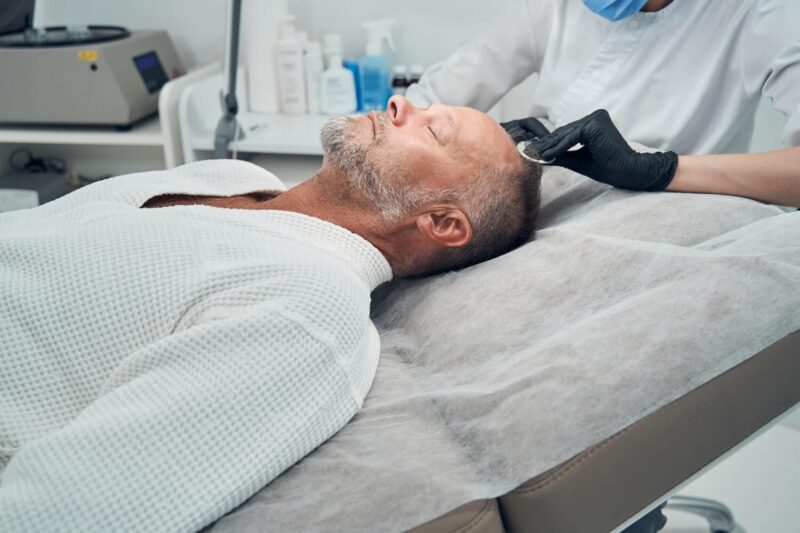There are different types of hair loss treatments for every individual who is experiencing hair loss or hair thinning. From laser therapies, and topical medications to hair transplantation, hair loss can be addressed through various treatment options.
Each method has its benefits and considerations. Let’s examine these treatments together!
Hair Transplantation
Hair transplantation is a plastic procedure to help you with your hair regrowth. It is a permanent solution and gives you a natural outcome. It consists of taking hair grafts from the donor area and implanting them into the recipient area with the help of different methods.
Let’s get further information about the techniques to identify which one suits your needs the most!
PRP Hair Treatment
Platelet-rich plasma is a form of regenerative medicine, this non-surgical procedure involves using the patient’s blood to extract the plasma that has a concentration of platelets and inject that serum into the scalp.
We will be introducing you PRP hair restoration treatment in detail from sessions to what to do during recovery.
We will see together if this treatment is beneficial or right for you!
Mesotherapy Hair Treatment
Mesotherapy is a non-surgical medicine treatment. Various medicines (such as minoxidil and finasteride), vitamins, and enzymes are selected for the patient’s needs and are injected into their scalp.
Let’s review and see if this treatment is good for you and for your hair regrowth journey!
LLLT (Low-level Laser Therapy)
Low-level Laser Therapy (LLLT) is a non-invasive hair stimulation treatment. This FDA-approved treatment helps stimulate cell function and indirectly helps hair growth by directing photons at the patient’s scalp.
LLLT might just be the right choice for you. Let’s see, shall we?
Stem Cell Hair Treatment (Alloblast)
Stem Cell Hair Treatment is another non-surgical hair restoration treatment. Stem cells can be taken from the patient, or can be from a donor. After the stem cells are collected, a homogeneous suspension is prepared. The suspension is later injected into the patient’s scalp.
This treatment can help stimulate hair growth in the area where the hair loss is occurring.
If you wish to see if this treatment can help you with your case, take a deeper look!
Exosome Hair Therapy
Very similar to stem cell therapy, non-surgical exosome hair therapy can help your hair grow, thicken, and be healthy. The exosomes have been observed to have helped rejuvenate hair follicles, basically bringing them back to life.
Can this be “the” treatment for you? Let’s wait no more!
Microneedling for Hair Loss
Microneedling (Collagen Induction Therapy, or CIT), or derma rolling, triggers the healing process on the scalp. This treatment stimulates the production of stem cells and collagens on the scalp, helping the recovery process of other treatments, such as PRP, and stimulating hair growth.
This treatment can help you if done properly, so let’s see how it rolls!
Scalp Pigmentation for Hair Loss
Scalp pigmentation, or scalp micropigmentation, is at its core a cosmetic treatment. This method gives the illusion of fullness on the scalp. It can be done on completely bald scalps or where hair thinning is present. Keep in mind that this method does not help with hair growth in any way.
Let’s see if you would like this method for hair loss best!
Minoxidil Hair Treatment
One of the the popular medicines for hair growth: Minoxidil! This medicine can be found in solution or foam forms; whichever suits you best. Minoxidil is a vasodilator, meaning it opens the blood vessels. When applied on the scalp, it can help open the blood vessels and let more nutrients reach the hair follicles. A well-fed hair follicle equals denser and healthier hair!
This treatment might be the one for you. Let’s see in detail how well this treatment might serve your condition.
Finasteride Hair Treatment
Finasteride is a 5-alpha-reductase enzyme blocker. This enzyme turns testosterone into dihydrotestosterone (DHT), which causes male pattern hair loss. This might not be the right choice for most women due to differences in hormones between men and women.
Let’s dive into the details of Finasteride and see how it can help and in what circumstances women can use this medicine!

